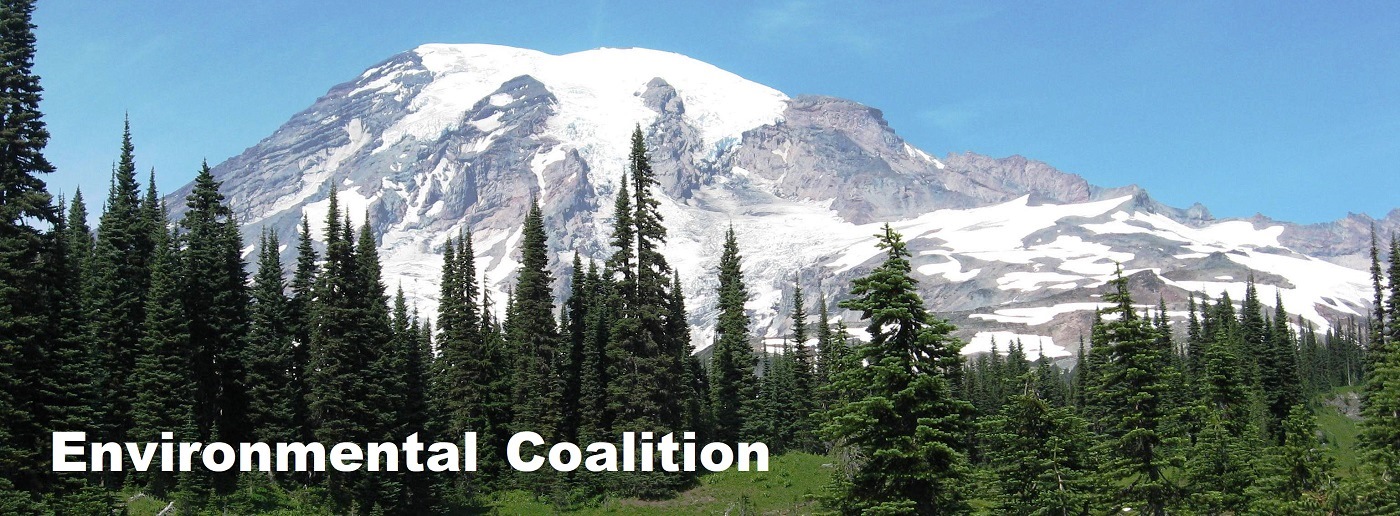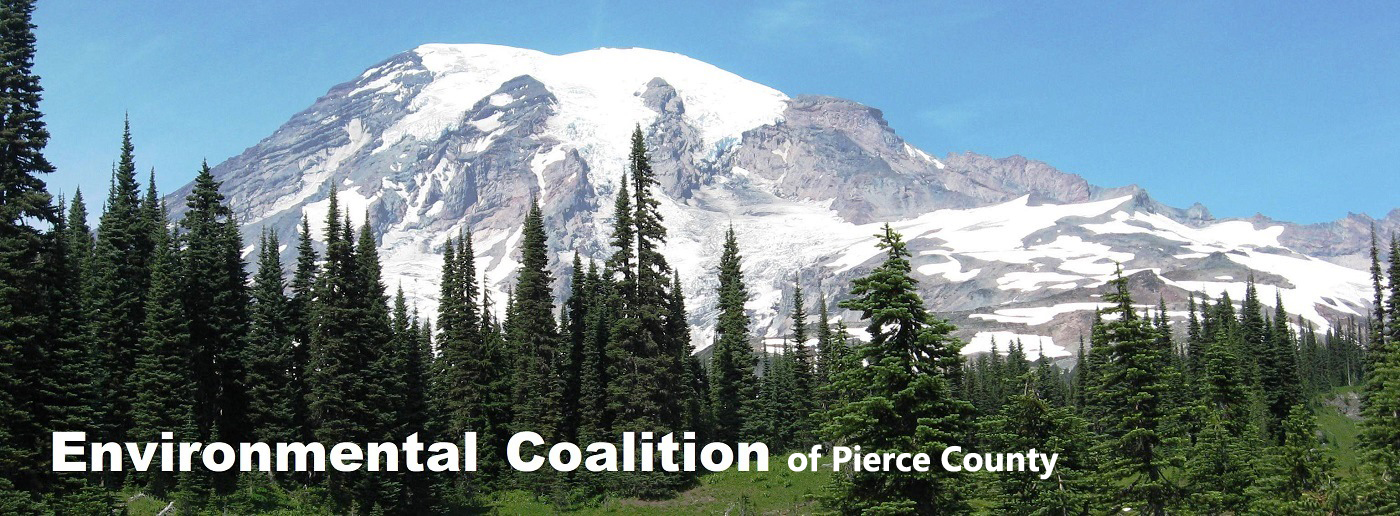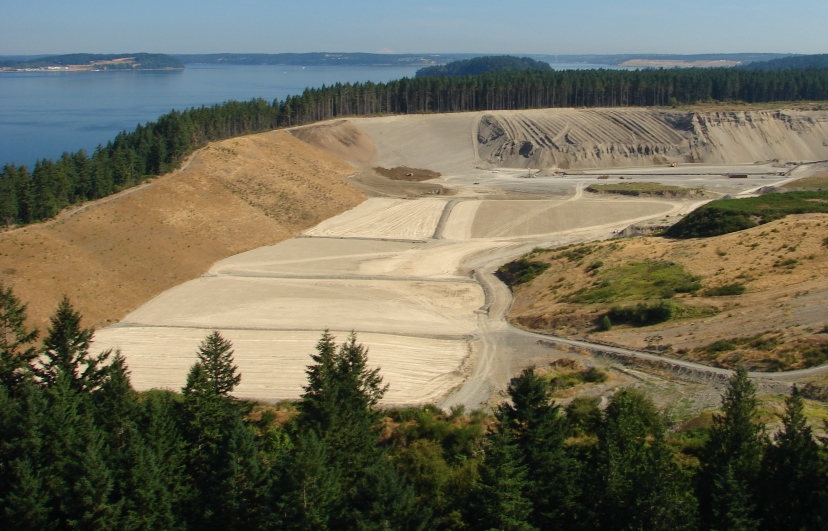A proposed mining expansion in the City of DuPont has generated some concern with its environmental impacts. The mine expansion will drain the local groundwater that feeds into a creek along the popular Sequalitchew Trail. And Edmond Marsh, a popular birding area, will lose its water supply.
The city’s Critical Area Ordinance and Growth Management policy both call for restoring Edmond Marsh and Sequalitchew Creek. However, the mine owners plan to shut off the water when they finish de-watering the aquifer and stop mining in this section of the mine.
The South Parcel Project calls for expanding current gravel mining operations in previously undisturbed areas, according to a city fact sheet about the project. CalPortland’s mining operations plan. It will create a mining area that expand mining operations to extract an additional 30-40 million tons of sand and gravel. Mining in the expansion would last for 14 years.
The proposal also discusses restoring the creek and marsh, but the proposed mitigation would only last until pumpsfor the mining operation are turned off.
The proposed mitigation would be a temporary and non-permanent restoration. “Many of the mitigation measures are likely at best, a temporary action because pumping in perpetuity is not feasible,” according to Page 36 of the Draft EIS.
If the mitigation proposed in the Draft EIS is approved and a new permit is issued by the City’s Hearing Examiner, the proposal would result in the logging of about 15 acres of coniferous trees, eliminate the previously undisturbed 10.8-acre Kettle Wetland, clear about 60 acres of scrub lands and grasslands and remove about 90 landmark trees. Landmark trees typically require protection due to their rareness, size, age, structure or ecological condition.
The current gravel mining permit from the city issued in 1997 does not allow mining that would de-water the aquifer. The previous agreement with the environmental groups including Nisqually Delta Association, Audubon Society and others, was to restore Edmond Marsh — permanently.
Barb Kincaid is DuPont’s Community Development Director and the policy official for the environmental impact process. Kincaid told the local newspaper in a recent story that the city received over 300 public comments “voicing many concerns about the adverse environmental impacts from this proposal” during the 30-day comment period.
Those comments will appear in the Final Environmental Impact Statement that will be published for final approval 3-4 weeks from now.
The 30-day comment period is officially closed, but people who have concerns about the mine expansion can send an e-mail to Ms. Kincaid at bkincaid@dupontwa.gov. Ask her to send a copy of the Final Environmental Impact Statement and future information about the City’s public hearing before the City’s Hearing Examiner.
Once the Final EIS is completed by the city’s Planning Department staff and the Director will make a recommendation to Approve the expansion or Deny the expansion. The recommendation will not be made by the City Council. The council cannot interfere with the permit process or with the decision of the Hearing Examiner.
After a series of public hearings, DuPont’s Hearing Examiner will make the final decision. Regardless of whether the permit is approved or denied, this permit is likely to be appealed in Superior Court.
This permit is in violation of Dupont City Ordinance and City Policy
CalPortland wants to according to the draft EIS. Based on past market demand, about 2.8 million cubic yards of material would be extracted each year for 14 years. If the project is not approved, the land would remain forest, grasslands and wetlands. If the project is approved, the mining expansion would result in a decrease in the Vashon Aquifer levels, which is expected to impact groundwater within a two-mile radius of the site.
Drinking water supplies in Sequalitchew Springs, DuPont’s Bell Hill and Hoffman Hill wetlands are not expected to be impacted by the project, according to the draft EIS. However, the expansion would result in habitat loss for mammals, birds, amphibians, and insects in and around the site, according to the draft EIS.
If approved, up to 79% of groundwater flows into Sequalitchew Creek would be lost. Water temperatures would fall in winter and rise in summer, and habitat and fish migratory patterns would also be disrupted, according to the draft EIS.
A restoration plan for Sequalitchew Creek would have to be funded by CalPortland if the mining expansion is approved. It would restore habitat and increase creek flow from Sequalitchew Lake through Edmond Marsh into Sequalitchew Creek canyon, according to the draft EIS. However the restoration is temporary. It ends 14 years later.
In a 2011 settlement agreement between CalPortland Company, the City of DuPont, the Washington Department of Ecology and other environmental stakeholders, CalPortland agreed to restore the creek, maintain the shorelands of Puget Sound and fund the permitting process and restoration work to do so.
If this proposed mining expansion project is not approved, the city would have to find alternative funding to restore the Sequalitchew Creek, according to the draft EIS. This would violate the 1997 agreement made in the original mining permit to restore Edmond Marsh.
If the proposal to expand operations is rejected, the existing mine is estimated remaining lifespan of 6-10 years, according to the draft EIS..
Currently, upper Sequalitchew Creek in DuPont s often dry during the summer. It is fed downstream by spring water. These springs are dependent on the ground water level of the aquifer. The creek is already being affected by previous hot summer droughts and other factors.
Pete Stoltz is the senior manager of permitting and government affairs for the mining company. Stoltz said that mining is an interim land use. He points to Chambers Bay Golf Course and Butchart Gardens in Victoria. “These are sites of a former limestone quarry, as examples of mined areas that have been transformed into new places for public use.”
These former mines have been used for agricultural land, forestry, and some are developed into new subdivisions. “And, you know, with modern reclamation practices, we can do a really good job,” he said.
Chambers Bay Golf Course was previously a gravel mine, but is now the site of a Pierce County sewer utility. There, a wastewater treatment process allows the trees and fairways to receive water from both natural springs and reclaimed wastewater.
The proposed restoration plan in DuPont does not include a long-term solution for the loss of Edmond Marsh and associated wetlands. Instead, it is a net loss of wetland values and functions. In the year 2038 there will be no viable salmon habitat in the Sequalitchew Creek sub-watershed, no functional Edmond Marsh wetland, and no groundwater discharge flow in Sequalitchew Creek.
City of Dupont Critical Area Ordinances:
Dupont municipal Code (DMC 25.105.010) calls for: “Directing a policy of no net loss of wetland and stream functio, values, in areas within the city.”
DMC 25.105.010 calls for: “Preventing, to the extent practicable, adverse cumulative impacts to water quality, wetlands, stream corridors, and fish and wildlife habitats using best available science”.
2015 Comp Plan Goals
- Natural Environment Goal NE-1: Preserve environmentally sensitive areas and those that are valuable natural an aesthetic resources to the City
- NE 1.4 Work with JBLM, The Department of Ecology, Glacier NW (the owner of the gravel mine), environmental groups, and other affected parties to restore and imrove the flow of water through Sequalitchew Creek.
Natural Environment Goal NE-5: Restore historic stream flow, improve habitat conditions, and promote long term preservation efforts within the City.
- NE 5.1 Maintain and where possible restore and enhance ecological functions and values of the Sequalitchew Creek Watershed, lakes, marshes, streams, wetlands, bluffs, and recognize the potential for passive public access on or at Old Fort Lake.
- NE 5.3. Maintain important wildlife habitats and function wildlife corridors to link important natural areas such as Edmond Marsh and Sequalitchew Creek.
This DEIS for the mine expansion does not implement the agreements of 1994, 2011 and 2021 that calls for the permanent wetland function of Edmunds Marsh. In the 1994 agreement the mining company agreed “to seek no permits in the future to mine in a manner that would significantly impact the flow of Sequalitchew Creek.”


